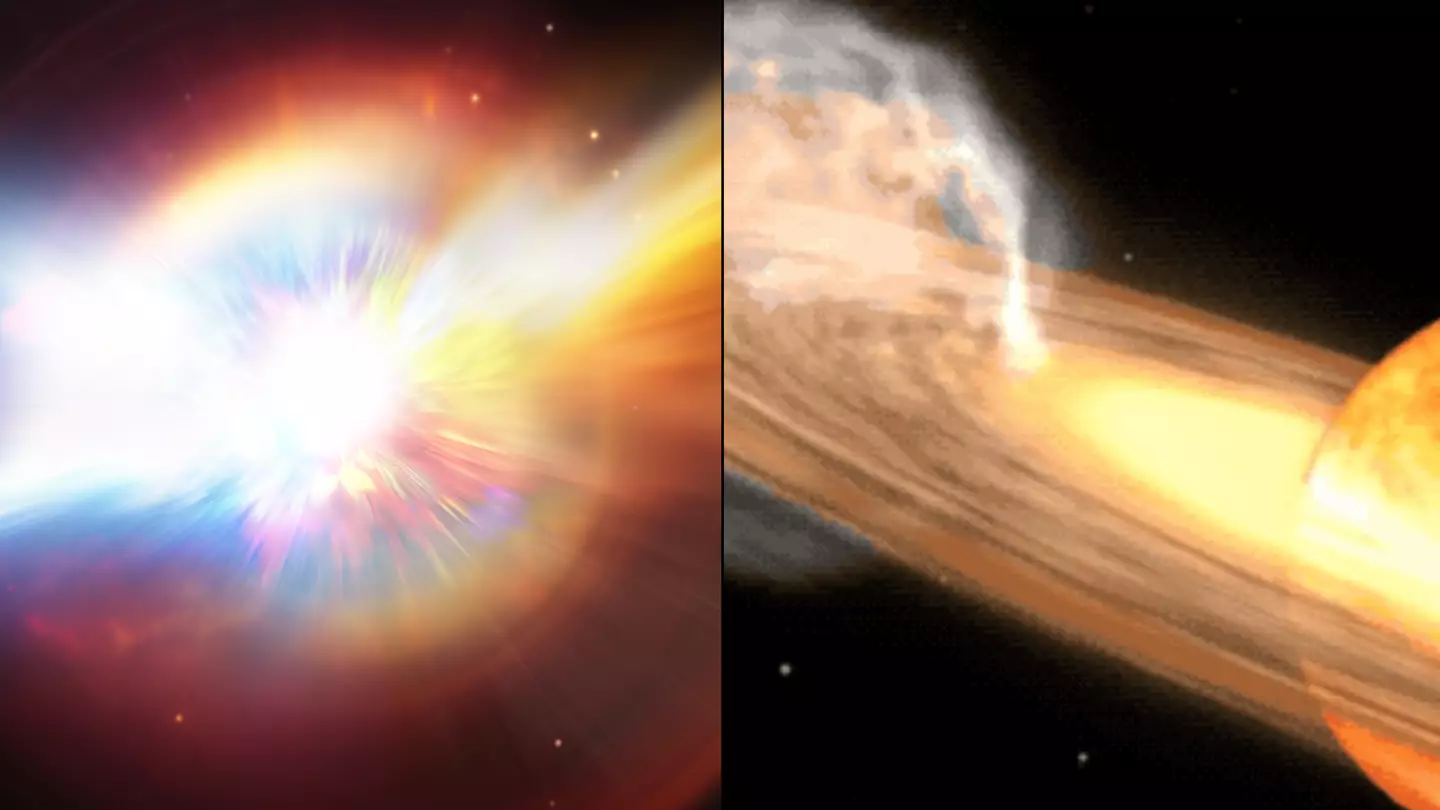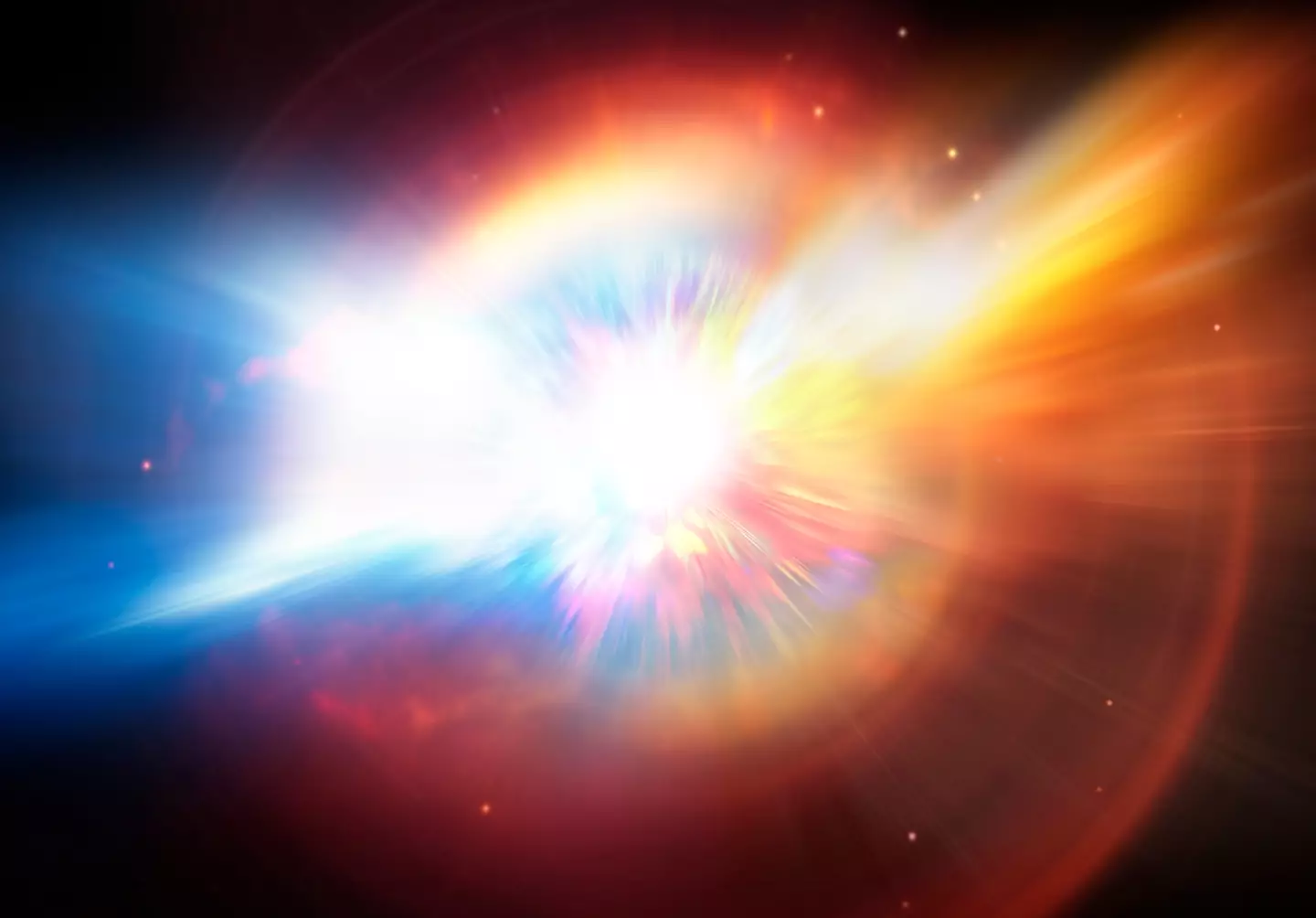
If you thought space events could only be seen with a telescope, then you’re going to want to wait for this cosmic explosion.
According to astronomers at the Nottingham Trent University, Earth is about to witness a 'once-in-a-lifetime' space explosion which they believe can be seen by the naked eye for days.
Just as you thought this month's solar eclipse was enough celestial excitement for the time being.
The event will be caused by two stars exploding around 3,000 light years away before it fades away for another 80 years.
Advert
The violent incident in the T Coronae Borealis system will look like a new star shining in the night sky. So, it’s not the type of explosion you’re thinking of, it’s more of a bright speck.
Dr Daniel Brown, an associate professor in astronomy at Nottingham Trent University, said the celestial event is actually called a nova, which means that a star’s brightness increases at a rapid place.
He said it is not too easy to predict when it will happen, but it should be between now and September this year.
Professor Brown told the PA news agency: “We are in for a treat, being granted a so-called new star in the skies.

“T Coronae Borealis is actually not a single star but a binary, so two stars orbiting each other.
Advert
“What makes this pair so special is that every so often it increases its brightness immensely to become easily visible to us.”
He went on to explain that the bigger star is called a white dwarf which ‘can pack roughly the same mass as our Sun in a volume as large as Earth’.
The second star is an ageing red giant which has grown in size and expended its material on to its companion.
Professor Brown said: “Every 80 years or so it (the white dwarf) gathers enough material so that it ignites in a thermonuclear explosion, boosting its brightness incredibly.
Advert
“For T Coronae Borealis, the time is up for another such explosion, taking its brightness from 11mag – just about visible with binoculars in a dark sky – to a whopping 2mag – comparable to the stars in the Plough and easy to spot with the naked eye, in even light polluted skies.”
After the explosion, T Coronae Borealis will then shine the brightest in the Corona Borealis constellation before dimming after a few days.
He went on to explain that you’ll be able to see the constellation in the UK after sunset in the Northeast.

He said: “It will be visible at its highest altitude in the South at 65 degrees above the horizon just after 3am, making observing easy.
Advert
“As we progress through spring, it will rise earlier and reach its highest altitude earlier as well.
“So we are in luck, as we approach the best time of the year to observe it.”
If you’re hoping to catch a glimpse, according to the astronomer, the Corona Borealis constellation can be seen by following the Plough’s handle in a curve down towards the star Arcturus.
He said: “This constellation is shaped like a kite with Arcturus at the bottom.
Advert
“Having spotted Bootes, Corona Borealis is the U-shape arc to the left of the kite.”
If you want to follow the brightening, Professor Brown advised using binoculars to become familiar with the region and the stars in constellation.
He said: “As the outbreak starts, you can start to compare its brightness against the other stars and, thereby, follow the outbreak yourself without needing any fancy cameras.”
Featured Image Credit: Getty Stock Image/PA/Nasa Goddard Space Flight Center